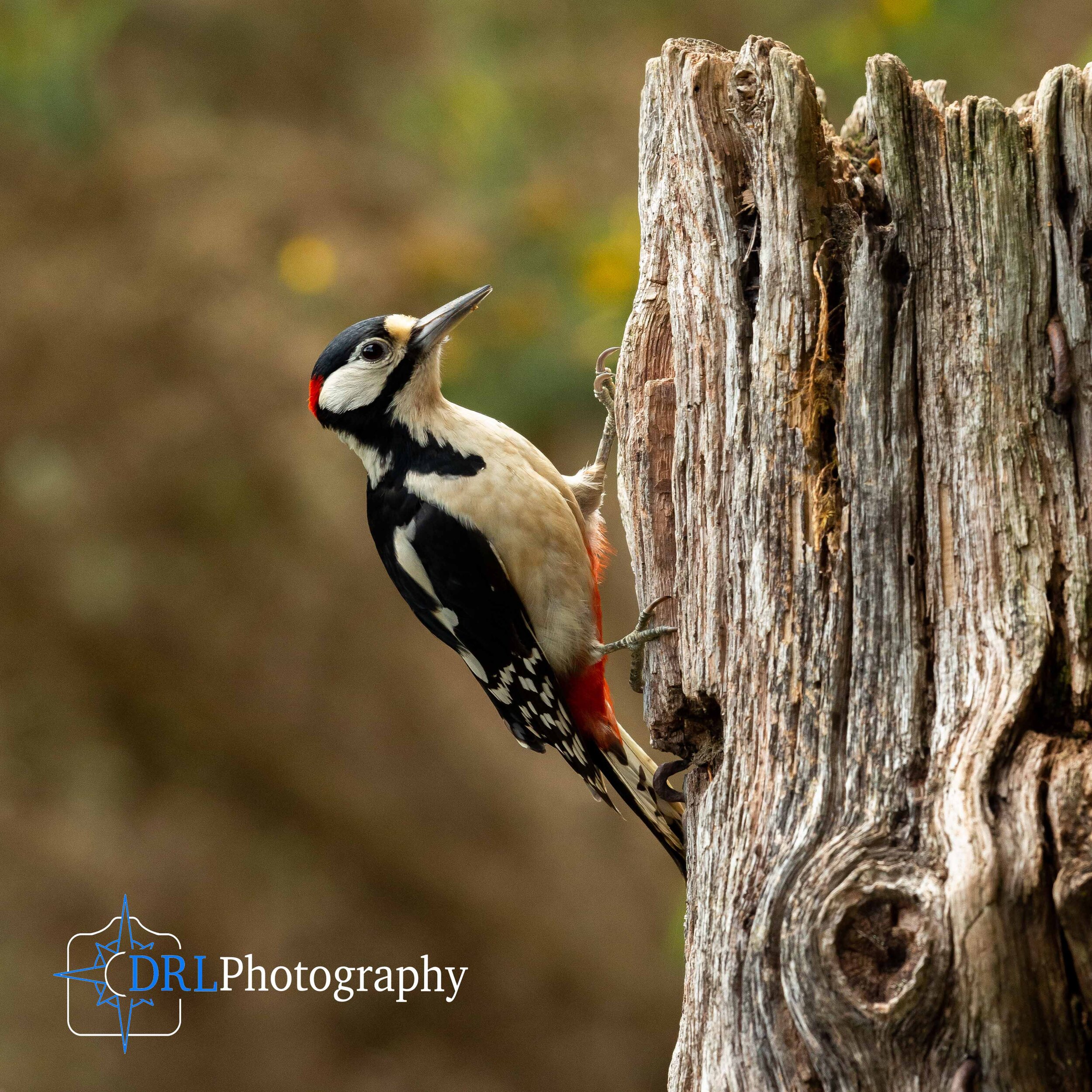Introduction to Wildlife Photography
DRL Photography is a participant in the Amazon EU Associates Program, an affiliate advertising program designed to provide a means for sites to earn advertising fees by advertising and linking to Amazon.co.uk
If you have looked through my portfolio you will have noticed that I do a lot of wildlife photography. This article is going to serve as an introduction to wildlife photography with some tips on getting started based on my own experiences.
I also offer wildlife photography guided photography sessions here in Scotland. So once the Covid-19 pandemic has passed, if you want to have a go at some wildlife photography in the outdoors and to talk more about it, then check it out!
I have always loved nature and the outdoors, so when I began my photographic journey, I of course started to photograph the wildlife around me. That was mainly garden birds, as they would visit my garden in search of food. I would spend hours watching blackbirds, robins, starlings, great tits, blue tits, coal tits, chaffinches, the occasional greater spotted woodpecker and many other birds that came to the bird feeders.
Naturally, these birds became subjects for me to photograph while I sat in the garden. I used a very simple Sigma 70-300mm lens on my Canon 20D. Needless to say those pictures were not very good, but I was just getting started!
My family and I would often visit the local zoos, at this gave me another opportunity to capture animals on camera, although they were captive. Some find zoos controversial but the Aspinall Foundation that manages the zoo does amazing work in conservation around the world, breeding animals in captivity for release, including lowland gorillas. They do their best to provide large enclosures with plenty of entertainment for the animals.
I was always fascinated by animals. But as I started to travel and study I was unable to pursue this interest very much. I upgraded cameras and lenses as time went on but never pursued wildlife very much as I was often in cities and I didn’t know where to begin.
Then I decided to move to Scotland and pursue a career in photography, my passion, and I made a huuuuge investment in a Canon 500mm f4 lens. I promised myself that I was investing in this lens to pursue wildlife photography, something that I had always wanted to do.
Let’s move on from the history lesson and talk about some tips on where to get started in wildlife photography.
Meerkat in a zoo
Camera Settings
You can totally get started with wildlife photography using the auto mode on your camera, but don’t be surprised if you don’t like the results!
I would recommend getting started using Aperture Priority (Av). Set your aperture to the lowest possible number whether that’s f4 or f5.6 or lower, you need light when photographing animals. Most of the time you will be taking images at the extreme ends of the day when light is a bit weaker.
Once your aperture is set in Av mode, there are 2 options for you. Keep ISO and shutter automatic, or set the ISO and allow the camera to pick the shutter speed. I explained in What is ISO how ISO affects an image, and how a higher ISO number can cause grain in an image.
But this is the quandary of wildlife photography: a high ISO to have a fast shutter, so a bit of grain but sharper animals; or a low ISO and slow shutter, so there could be no grain but the animal may be blurred or soft around moving parts.
In general in wildlife photography, we choose a high ISO to have a fast shutter, to make sure the animals are nice and sharp. There are exceptions to this but I’ll write about that another time.
If you decide to shoot in manual, at first you may find that everything happens a bit too fast but you will adapt quickly.
You should also read my articles about how does autofocus work and why you should be using back button focusing. Those 2 will help you in wildlife photography, especially back button focusing and using the correct autofocus settings.
Don’t worry too much about settings and just enjoy watching the animals and practicing. Wildlife photography more than any other discipline is really all about practice.
Wren on a Log
Camera Equipment
Any DSLR or mirrorless camera will work for wildlife photography. Just try and pick a camera that you can easily change settings and which you are familiar with.
As far as lenses go, again don’t worry too much! Just pick a lens that fits in your budget. A simple zoom lens like the Tamron 70-300mm lens will be more than enough to get you started. If you want to get better quality glass then the Canon 100-400mm lens is really crisp and has a good range.
A tripod is a must. Something a bit more robust than a simple travel tripod is recommended to ensure no camera shake. The top dog of wildlife photography would be a Gitzo Series 3, very sturdy but very expensive as well, and I would say only invest in a tripod like this if you know you are going to get the use out of it!
You could use extenders like the Canon 1.4x or 2x teleconverter, they both increase the magnification of the lens, but there is a compromise. They will make your aperture smaller, which means you’ll need to increase your ISO or decrease your shutter speed. And they are often a little soft from diffraction.
That’s really all you need to get started, there are some more specialised bits and pieces but wildlife photography is only kit heavy and expensive in terms of the lenses we buy to get the sharpest images possible. At first it can be quite a cheap hobby!
Dunnock (Hedge Sparrow) feeding a chick on a log
Garden Birds
By far the easiest subject to start with, we all have birds in the garden and if you’ve never seen them, then it’s a simple case of putting out some food and seeing what comes.
If you want to pursue wildlife then you must have an interest in the natural world, if you don’t like watching and identifying animals then this is really not for you.
So to begin with I would recommend leaving the camera in the bag, and sitting in a garden with some binoculars and a good bird guide book to help you identify what comes into your garden. Once you’ve identified a few species, you can choose the food that they like, to keep them coming back.
If you don’t see very many species put out a mix of bird seed, suet pellets, peanuts, mealworms and maybe even a fat block. You could also put out some raisins in case you have some fruit eating birds. With this smorgasbord of various food, you should have some interest within a few days.
Position the feeders close to the bushes or fences, as often, garden birds like a bit of cover and a perch from where they can observe what’s going on. Once they get used to the feeders, it’s time to start to create a photography stage.
Collect branches and bits and bobs that you think will look good if a bird stands on it. Place them in your garden securely and bring the feeders close to it. The idea is for the birds to perch on your photogenic prop before going to the feeders.
Now you need to sit in a comfortable position, with muted colours and making use of shadows. Essentially, camouflaging yourself a bit. Or you can use a tent or shed as a hide. Or you can even take photos from a window. The choice is yours, but don’t be discouraged if at first the birds are a little cautious.
They will soon settle and you can get some decent garden bird pictures. I will try and write an article in the next couple of weeks going into more depth on this.
Greater Spotted Woodpecker on a log
Conclusion
This is just an introduction to the wonders of wildlife photography, as time goes on I am going to write more in depth features about wildlife photography. In particular composition and tips to improve your photography, as well as in depth species or subject guides.
When starting out don’t worry about camera settings and getting a sharp photo. Aim for getting a good picture using the correct settings and hope the subject is in focus, but don’t kick yourself if it doesn’t happen. You need to be focusing on learning about the subject you are photographing.
Read about animals in field guides and observe them in the world. I would strongly recommend not taking your camera and just watching the animals. Learning to identify different species and observing their behaviour. This will prove to be very useful moving forward.
Unlike in other areas of photography, you are going to need a fast shutter so get comfortable increasing your ISO higher than you would normal. This is a hard thing to get over, but looking over my images I know I would have gotten some images sharp if I had a faster shutter and consequently a higher ISO.
Have a go at some garden birds when starting out. You can do it in the comfort of your own home and they are generally quite confiding, as they are used to you living there, so you are not invading their space. Plus they will love the food!
Good luck and let me know how you get on with your first wildlife photography project below in the comments section.
Related Articles
Written by Daniel Long
Daniel Long created DRL Photography as a place to showcase his work as a photographer. Daniel has learnt a lot about photography and wishes to impart this knowledge with you, although the world is an ever changing place and he always says “you can never learn everything.” So as he makes his way, he continues to learn knew techniques, skills and information about photography. He focuses on Landscape and Wildlife photography and Daniel has a special focus on Scotland, his home away from home. As well as writing about photography and taking pictures out in the field, Daniel offers guided photography days so he can share his knowledge and locations in an effort to give his clients the best opportunities possible. Have a browse around this website to see his images, guided experiences and articles about photography. If you have any questions don’t hesitate to get in contact.




















